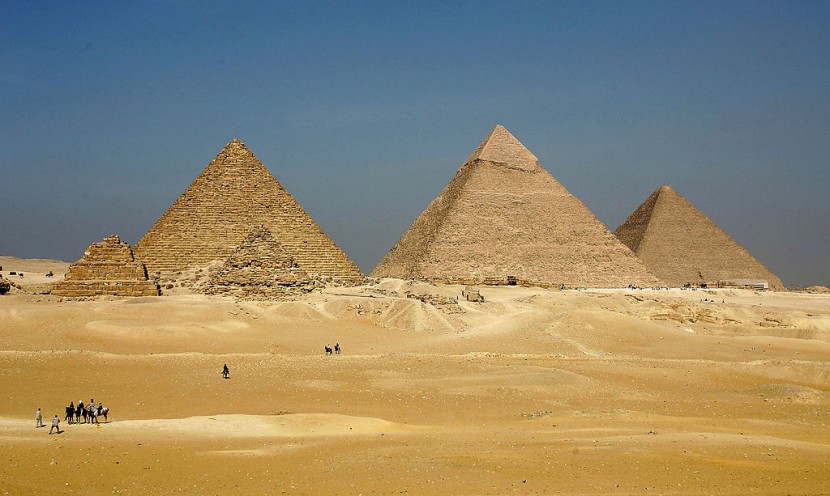
The Pyramids of Giza were designed on such axes that produced a perfect alignment that was done without modern surveying technology. Other than this mystery associated with Giza structures like unknown voids or hidden rooms is misunderstood how it was built, same as alignment with no relevant technology..
Alignment of the Pyramids of Giza
Glen Dash, an archaeologist and engineer, explained it in a 2017 study published in The Journal of Ancient Egyptian Architecture
The square sides of the Pyramid of Khufu, about 455 feet, are all straight and almost perfectly aligned at the cardinal point of north, south, east, west, reported Science Alert.
Dash explained how the Great Pyramid of Khufu was constructed with an accuracy of better than four minutes of arc, or one-fifteenth of a degree, with the cardinal points.
Of the three of the largest pyramids in Egypt, two at Giza with one at Dashur are perfectly aligned, which is impressive since no drones, blueprints, and computers were available to analyze them based on the final structure.
The three other pyramids have the same error; they rotated slightly counterclockwise from the cardinal points. Several explanations existed to describe how ancient Egyptians did the alignment. The pole star was the key to aligning the ancient structures using the sun's shadow, but nothing clearly answered how it worked.
Dash had suggested a more straightforward idea that the Egyptians about 4,500 years ago might have used the autumnal equinox reach achieve the perfect alignment seen in the Pyramids of Giza.
This equinox happens twice a year when the plane of the Earth's equator passes in the middle of the sun's disc, and the length of day and night is nearly equal.
Egyptian's Method To Align the Pyramids
Initially, equinox measurements were disregarded as a potential alignment technique because they were considered to be insufficiently precise. But the work to achieve precision is using a rod called a gnomon, said Dash.
Dash used an experiment devised to solve the problem, beginning on the initial day of the fall equinox in 2016 to September 22 in the same year; a gnomon was used to cast a shadow to work out the problem.
Making a smooth arc of points by noting the shadow as it traveled to regular intervals. At the end of the day, he intercepted two of the curve's points with a taut piece of string wound around the pole, creating an almost perfect east-west line. It is also called the Indian circle method when a surveyor will spot the tip of a shadow in a straight line from east-west during the equinox.
He also showed that the degree of error is significantly counterclockwise, identical to the minor error identified in the alignment of Giza's Khufu and Khafre pyramids and also Dahshur's Red pyramid. Dash's experiment was done in Connecticut, USA, although it might apply to Egypt.
According to Live Science, the Egyptians needed to align the pyramids, as explained by the scientist. It is no accident that ancient Egyptians learned to define the fall equinox by counting 91 days starting from the summer solstice. The paper's hypothesis points out that this method could have been used to align the pyramids, but this remains uncertain with bare few clues left.
Related Article: Archaeologists Scan Ancient Pyramid of Giza in Egypt With Cosmic Rays Revealing Hidden Voids
© 2025 HNGN, All rights reserved. Do not reproduce without permission.








